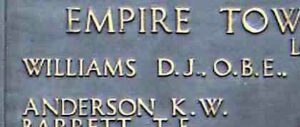Shiloh (Seilo) Methodist Chapel and schoolroom were built in 1863 by architect John Lumley of Aberystwyth. The Chapel was rebuilt in 1868. In May 1920 a service was held in Shiloh to unveil the memorial to the members of the chapel who died in The Great War, which reported on in the Welsh Gazette of 21 May 1920; ‘Er cof am aelodau a meibion o’r Eglwys hon a aberthodd eu bywyd yn Rhyfel 1914-1918. Sef. Joacim Bonner, Albert Davies, Alfred J Edwards, Edward J Edwards, William J Edwards, J Arthur Jones, Edward David Evans, J Llewellyn Griffiths, Evan T Hughes, David W Jenkins, David Jones, Thomas J White, William Jones, Caradog Jones, David A Mort, Hugh Owen Rowe, James Rowlands.’ The members of the Chapel who fell during World War Two are commemorated on a fine bronze memorial statuette. On the closure of Shiloh both the WW1 and WW2 memorials were moved to Capel Y Morfa. By 1995 the chapel had been demolished.
Shiloh Chapel War Memorial, The Great War, 1914-1918
Joachim Bonner, Private, 14540, South Wales Borderers. Joachim was the son of Evan and Sarah Bonner, of 3, Brewer Street, Aberystwyth. He enlisted at Bridgend into the 5th Battalion, South Wales Borderers, which was attached to 58 Brigade, 19th (Western) Division. The Division moved to France during July 1915, and moved to positions near Loos, where it took part in the opening attack of the Battle of Loos on 25 September 1915. The following year the Division moved to the Somme, where it took part in the second wave of the attack on Ovillers-La Boiselle on 1 July, capturing the village at heavy cost. It then fought through the Somme Battles of Pozieres and the Ancre in 1916. In 1917 the Division moved North to Ypres, taking part in the Battle of Messines. Joachim was killed just prior to the launching of the Messines offensive, on 6 May 1917. He was 27 years old, and is buried at Vlamertinghe Military Cemetery, Belgium.
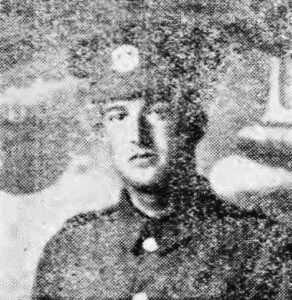
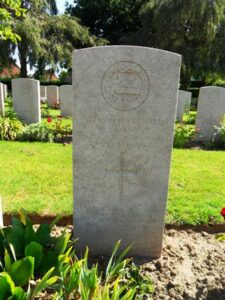
Albert Davies, Private, 38466, Gloucestershire Regiment. Albert was the adopted son of John and Mary Davies, of 14, Glanrafon Terrace, Aberystwyth. He joined the South Wales Borderers in Brecon, but in 1918 was transferred to the 8th Battalion, Gloucestershire Regiment, which was attached to 57 Brigade, 19th (Western) Division. The Division was stationed near Bapaume, and was hit here on 21 March 1918 by the German Spring offensive, suffering heavy casualties over the coming days, whilst fighting a brave rearguard action. The battered Division was transferred to the quieter sector at Messines, but was hit here by a renewed offensive the following month. Albert was killed at Messines on 18 April 1918, aged 19. He is commemorated on the Tyne Cot Memorial, Belgium.
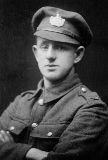
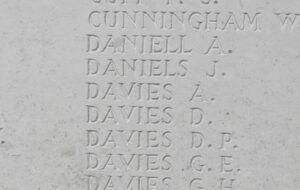
Alfred Thomas Edwards, Private, 27022, Royal Welsh Fusiliers. Alfred was the son of John and Mary Edwards, of 10, Little Darkgate Street, Aberystwyth. He enlisted at Holborn, London into the Royal Welsh Fusiliers, and was posted to France early in 1916, joining the 1st Battalion, Royal Welsh Fusiliers, which was attached to 22 Brigade, 7th Division. The battalion was on the Somme, stationed near Fricourt, where two of its officers included Robert Graves and Siegfried Sassoon, two of the most famous war poets. The battalion took part in the 1 July 1916 assault at Fricourt towards Mametz Village; one of the few successes of the opening day of the battle. After the 38th Division had captured Mametz Wood, the 7th Division moved past towards High Wood, before attacking the wood itself. Alfred was killed during terrible fighting at High Wood on 3 August 1916. He was 24 years old, and is commemorated on the Thiepval Memorial, France.
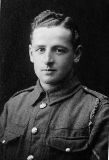
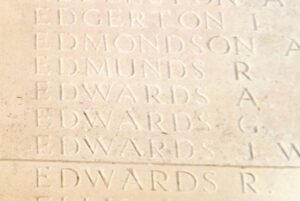
Edward John Edwards, Seaman Gunner, Royal Naval Reserve. Edward was born on 5 January 1890, probably the son of Edward and Elizabeth Edwards, of 45, Greenfield Street, Aberystwyth. He was a long serving mariner, enlisting into the Mercantile Marine on 15 February 1908, and had been a crew member aboard the RMS Lusitania prior to the war. Edward appears to have served aboard the armed passenger steamer HMS Louvain. She had been previously named SS Dresden, and was the ship where the famous German inventor Rudolf Diesel went missing from in 1913. Following the outbreak of war, Dresden was converted into an armed merchant steamer and renamed HMS Louvain. On 20 January 1918, Louvain was sailing from Malta to Mudros Harbour, on the Greek island of Lemnos in the north Aegean Sea, when she was sighted by the German submarine UC-22. The submarine laid a cluster of mines in front of Louvain, before withdrawing to launch a torpedo attack. One torpedo struck the stern of Louvain and caused an explosion in the magneto room, causing the stricken ship to sink quickly by the stern. The order was given to all aboard top abandon ship, but she sank so quickly that it was impossible to launch her lifeboats and as a result over 230 lives were lost. Edward was among those lost aboard Louvain that day, but for some reason he is not commemorated by the CWGC.
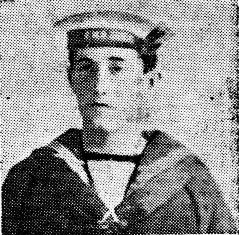
William John Edwards, Gunner, 168353, Royal Field Artillery. William was the son of David and Ann Edwards, of 9, Spring Gardens, Aberystwyth. He left Aberystwyth with the Cardigan Battery, Royal Field Artillery in August 1914, but didn’t get posted to France until 1916, after being transferred to the 124th Battery, 28th Brigade, Royal Field Artillery, which was attached to the 5th Division. William probably fought at the Battle of the Somme that year, and moved with the Division to Ypres the following year, where they took part in the Third Battle of Ypres. William was killed in action at Ypres on 5 August 1917, aged 23 and is buried in The Huts Cemetery, Belgium. In his last letter home he said that he had been recommended for the Meritorious Service Medal, but this was not a posthumous award, and so its award was never signed off.
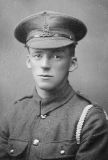
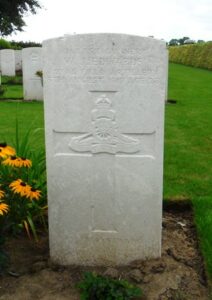
Edward David Evans, Company Sergeant Major, 14401, Kings Shropshire Light Infantry. Ted was born in 1887, the son of Edward and Elizabeth Evans, of 15, Baker Street, Aberystwyth. Prior to the outbreak of war he had worked at the L C & M Bank in Newcastle Emlyn. He enlisted at Carmarthen into the 7th Battalion, Kings Shropshire Light Infantry in September 1914 along with his close friend David Rees Davies. On 28 September 1915 the Battalion landed at Boulogne, joining 8 Brigade, 3rd Division at Meteren. The Division then moved to the Ploegsteert Wood sector, before moving to the Busseboom Sector at Ypres. The 7th KSLI took up positions in Sanctuary Wood, and fought at the Actions of the Bluff, and at the St Eloi Craters. The Division was then moved south to the Somme, and fought there at the Battle of Albert. During an assault on the German trenches at Bazentin Ridge on 14 July 1916, Ted’s company was caught on barbed wire and came under heavy fire from enemy machine guns. Ted was killed in action that day, and is commemorated on the Thiepval Memorial, France. He had severely felt the death of his old friend Sergeant David Rees Davies, of Aberystwyth, who had enlisted at the same time and had been killed a few weeks earlier.
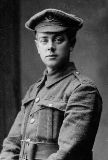
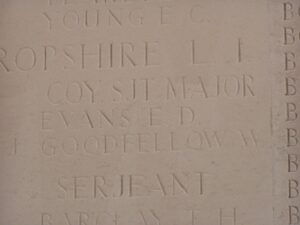
John Llewelyn Griffiths, Second Lieutenant, Northumberland Fusiliers. John was the son of William and Martha Griffiths, of 1, Turberville Road, Mount Pleasant, Porth Rhondda. He resided at 13, Terrace Road, Pontrhydfendigaid prior to the war, and was commissioned into the 15th Battalion, Northumberland Fusiliers. John was posted to France where he joined the 12th Battalion, Northumberland Fusiliers, which was attached to 62 Brigade, 21st Division. The Division landed in France between 2 and 13 September 1915, moving to positions at Loos, in reserve, It was sent into action on 26 September, suffering over 3,800 casualties. The Division moved to the Somme in 1916, in readiness for the launch of the Somme offensive on 1 July 1916. John was killed on the Somme during the build up to the battle on 26 June 1916. He was 22 years old, and is buried at Dartmoor Cemetery, Bécordel Becourt, France.
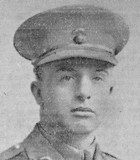
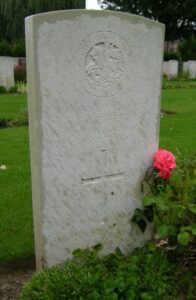
Evan Thomas Hughes, Driver, 452275, Royal Engineers. Evan was born in 1896, the son of Elizabeth Kate Hughes, of Little Dark Gate Street, Aberystwyth. He worked for the Cambrian News prior to enlisting into the Royal Engineers Territorials, and served in Palestine as a driver with U Corps Signal Company, Royal Engineers. Evan survived the war, but had taken ill with pneumonia, and was hospitalised at Alexandria. He died of pneumonia in Palestine on 12 November 1918, aged 22, and is buried in Alexandria War Memorial Cemetery, Egypt.
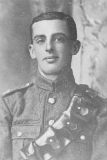
David William Jenkins, Private, 11289, Royal Welsh Fusiliers. David was born at Llanfihangel, Breconshire in 1886, the son of Thomas and Margaret Jenkins. The family had resided at Llanbadarn prior to the war. David enlisted at Brecon into the army, and was posted to France on 11 December 1914, where he joined the 1st Battalion, Royal Welsh Fusiliers, which was at Ypres attached to 22 Brigade, 7th Division. The Battalion had suffered heavy casualties during First Ypres, and were by now in positions near Neuve-Chapelle. In March 1915 the 7th Division fought at the Battle of Neuve Chapelle. During May they fought at the Battle of Aubers Ridge, and at Festubert, before taking part in the Battle of Loos in September. In the summer of 1916, the Division was on the Somme, and took part in the Battle of Albert, capturing Mametz. David was killed on the Somme on 4 July 1916, during the battalions attack on Quadrangle Trench, south of Mametz Wood. He was 20 years old, and is commemorated on the Thiepval Memorial, France.
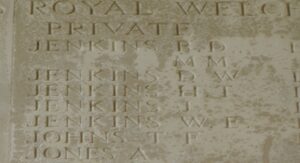
Caradog Jones, Private, 267994, Royal Welsh Fusiliers. Caradog was born on 31 July 1899, the son of Elizabeth Jones, of 13, Tanyrallt Terrace, Blaenau Ffestiniog. He enlisted at Ffestiniog on 8 March 1915 into the 17th Battalion, Royal Welsh Fusiliers. Caradog was then transferred to the 20th RWF, before landing in France on 25 June 1916 as a reinforcement to the 16th RWF. He was posted home after having been found to be underage, but in the meantime fought at Mametz Wood. In the summer of 1917 He was posted to Mesopotamia, joining the 8th RWF, which was attached to the 13th (Western) Division. He served there until taking ill, and died of malaria on 3 August 1918, aged 19. Caradog is buried in Baghdad (North Gate) War Cemetery, Iraq.
David Jones, First Engineer, Mercantile Marine. David, known locally as Dei, was the son of Captain Richard David Jones and Mary Jones, of Ael-y-Bryn, Talybont. He served with the Mercantile Marine as First Engineer aboard the SS Argyle, a Newport registered steamer. On 13 April 1917, Argyle was on route from Port Kelah for Middlesbrough with a cargo of iron ore, when she was torpedoed and sunk by the German submarine U-84, off Harwich, with the loss of 22 lives. David was 28 years old when he died that day, and is commemorated on the Tower Hill Memorial, London.
John Arthur Jones, Private, 22445, Somerset Light Infantry. John was the son of John and Margaret Jones of 2, Powell Street, Aberystwyth. He was a journalist prior to the war, and resided at Bow Street, Longport, Somerset. John enlisted at Taunton into the 8th Battalion, Somerset Light Infantry. On 10 September 1915 the battalion landed at Le Havre, attached to 63 Brigade, 21st Division, and in July 1916 fought at the Battle of Albert. On 8 July 1916, 63 Brigade, transferred to the 37th Division on the Somme. The Division then moved to Arras, and took part in the First Battle of the Scarpe, where they captured Monchy le Preux. They then took part in the Second Battle of the Scarpe, and the Battle of Arleux before moving north to Ypres. Here, they fought throughout Third Ypres. John was killed at Ypres on 31 July 1917. He was 28 years old, and is commemorated on the Ypres (Menin Gate) Memorial, Belgium.
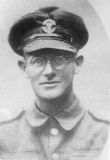
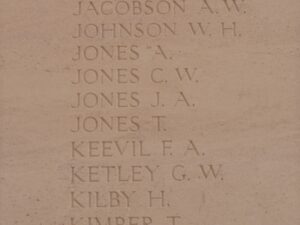
William Jones, Engineer, Mercantile Marine. William was the son of John Jenkin Jones and Martha Jones, of Aberystwyth, and husband of Jane of 15, North Parade, Aberystwyth. William served with the Mercantile Marine as Second Engineer on the SS Lena, a Cardiff registered steamer. On 13 July 1917, Lena was torpedoed and sunk by the German submarine U-61, off the Scilly Isles, with the loss of all hands. William was 54 years old when he drowned that day, and is commemorated on the Tower Hill memorial, London.
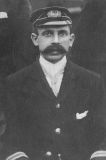
David Arthur Mort, Pioneer, 155373, Royal Engineers. David was born in 1896, the son of David and Kate Mort, of Llangyfelach, Morriston. He had originally enlisted at Aberystwyth into the Royal Welsh Fusiliers, but was later transferred to the 1st Battalion, Special Brigade, Royal Engineers, a gas warfare unit. David was badly wounded on the Somme in 1916, and was evacuated to the Military Hospital at Rouen, where he died on 1 July 1916, aged 19. David was buried at St. Sever Cemetery, Rouen, France.
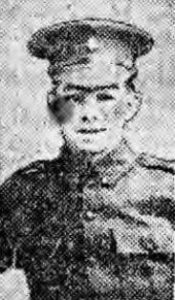
Hugh Owen Rowe, Pioneer, 82545, Royal Engineers. Hugh, who was known locally as Hughie, was born at Aberystwyth in 1896, the son of John Hugh Rowe, musical director of the town band, and Elizabeth Rowe of Glencairn North Road, Aberystwyth. Hughie had played football for Aberystwyth Town FC prior to the war. He enlisted in 1915 into the Royal Engineers, and was posted to France early in 1916, joining the 8th Division Signal Company, Royal Engineers. The 8th Division was on to the Somme in 1916, where they fought at the Battle of Albert. In March 1917 they followed the German Retreat to the Hindenburg Line, and later that year moved to Ypres, fighting at the Battle of Pilckem, and the Battle of Langemarck. In March 1918 the Division was on the southern end of the Somme, and here met the German Offensive head on, at the Battle of St Quentin, desperately fighting a rearguard action over the coming days, before being withdrawn from the line to rest. Hughie took ill with influenza during this period, and was evacuated to Etaples where he was hospitalised. Hughie was 22 years old when he died of influenza at the 51st General Hospital at Etaples on 5 May 1918. He is buried at Étaples Military Cemetery, France.
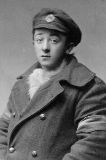
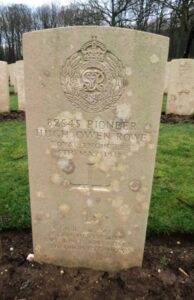
James Rowlands, Private, 4660, Australian Infantry. James was born in 1885, the son of William and Margaret Rowlands, of 9, North Parade, Aberystwyth. He emigrated to Australia in 1912 and took up employment as a bank clerk in Melbourne. On 21 August 1915 James enlisted at Melbourne into the 7th Infantry Battalion, Australian Imperial Force, and embarked from Melbourne on 28 February 1916, aboard HMAT Themistocles. He disembarked at Suez on 28 February 1916, and joined up with his battalion in Egypt, where it was rebuilding after the Gallipoli campaign, and was attached to the 2nd Brigade, 1st Australian Division. In March 1916, the Division sailed for France, and entered the front line trenches in Flanders on 3 May 1916. The Divisions first major action in France was at Pozières, during the Somme offensive, where it fought between 23 to 27 July and at Mouquet Farm from 15 to 21 August. The battered Division was moved to Ypres, but returned to the Somme, spending the winter on 1916/1917 in trenches near Flers. In early 1917, the Germans withdrew to the Hindenburg Line and the 7th Battalion took part in the advance that followed, and stopped near Bullecourt. The battalion was withdrawn from the front line for training on 9 May 1917 and did not return to action until the Ypres offensive of September and October. It fought major battles at the Menin Road on 20 September and Broodseinde on 4 October 1917. James was killed by a shell at Broodseinde on 4 October 1917. He was 32 years old, and was buried on the battlefield. His grave was later relocated, and today, James is buried in Tyne Cot Cemetery, Belgium. James had a colourful army career. He had been court martialled several times for being absent without leave, and had been reduced from Corporal to Private after suffering a spell in prison.
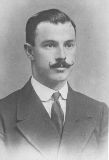
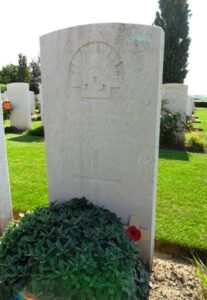
Thomas James White, Royal Field Artillery. Thomas was born in 1893, the son of James and Agnes White, of 13, Poplar Row, Aberystwyth. He served in England for two years during the Great War with the Royal Field Artillery, but was taken ill over the winter of 1917 and discharged from the army. He died at Aberystwyth on 4 May 1918, aged 23. No more is known of Thomas, as he is not commemorated by the CWGC.
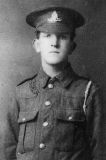
Shiloh Chapel War Memorial, World War Two, 1939-1945
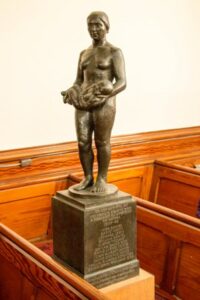
The WW2 memorial is a statuette with eleven names on it, which was made by R L Gapper. Photographs of the memorial have been kindly sent in by Laurie Wright, with the assistance of Eleri Davies, who aided in getting the photographs, and also made the location of the statuette (which was thought to have been lost) known to me.
The Statuette is Inscribed
ER COF AM AELODAU’R EGLWYS HON
A GOLLODD EU BYWYDAU
YN RHYFEL
1939 – 45
IVOR DAVIES
DAVID MANN
LEONARD LEWIS
WILLIAM DANIEL
ELWYN THOMAS
GWILYM DAVID REES
DAVID LLOYD JONES
JOHN HUBERT JAMES
DAVID DENNIS JAMES
JEMUEL RICHARD EDWARDS
DAVID JOHN WILLIAMS O.B.E.
William James Daniel, Fusilier, 14320767, Royal Welch Fusiliers. William was the son of David James Daniel and Mary Alice Daniel, of Aberystwyth. He served with the 2nd Battalion, Royal Welch Fusiliers. The battalion took part in the Burmese campaign, and it was there that William was killed on 3 February 1945. He was 20 years old, and is buried in Taukkyan War Cemetery, Myanmar.
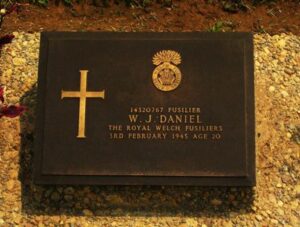
Ivor Davies, Private, 5628899, Devonshire Regiment. Ivor was the son of John and Elizabeth Davies, of Aberystwyth, and the husband of Mary E. Davies, of Llanafan. He served with the 11th Battalion, Devonshire Regiment. Ivor served with the battalion in the campaign in Burma. He was killed in Burma on 11 April 1944, aged 33, and is commemorated on the Rangoon Memorial, Myanmar.
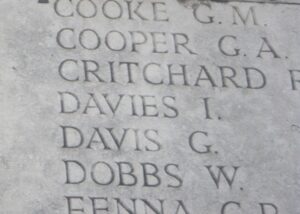
Jemuel Richard Edwards, Flight Sergeant, 1286856, Royal Air Force Volunteer Reserve. Jemuel was the son of Owen and Ellen Ann Edwards, of Aberystwyth. He served with 296 Squadron, Royal Air Force. The Squadron was formed on 25 January 1942, at RAF Ringway from the Glider Exercise Unit, and moved to Netheravon to tow Hotspur Gliders on training flights. In May 1942 it began to receive Armstrong Whitworth Whitleys. On 8 September 1942, Jemuel was aboard Whitley Serial BD436 of 296 Squadron, and whilst climbing out of the front hatch of the aircraft walked into the airscrew, which was still turning. Jemuel was 24 years old, and was brought home for burial at Aberystwyth Cemetery.
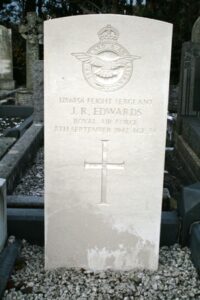
David Dennis James, Telegraphist, D/JX 211773, Royal Navy. David was born in Llandovery on 13 December 1919. His family must have moved to Aberystwyth as David was educated at Ardwyn School. He enlisted into the Royal Navy and was posted aboard the frigate HMS Mourne. On 15 June 1944, Mourne was in action, supporting the Normandy Landings, when she was torpedoed and sunk by the German submarine U-767 in the English Channel. Three days later, whilst still in the channel, the U-Boat was to suffer a similar fate when she was hunted down by British destroyers with depth charges, and sunk. David is commemorated on the Plymouth Naval Memorial, Devon.
John Herbert James, Fusilier, 4204148, Royal Welch Fusiliers. John was the son of Hugh Owen James and Elizabeth James, of Aberystwyth. He served with the 70th Battalion, Royal Welch Fusiliers, which was a young soldiers battalion. John died on active service at Sleaford, Lincolnshire on 19 May 1943, aged 26. John was brought home for burial at Penygarn Calvinistic Methodist Cemetery, Tirymynach.
David Lloyd Jones, Flight Sergeant, 975131, Royal Air Force Volunteer Reserve. David was the son of John William and Elizabeth Ann Jones, of Aberystwyth. He was the husband of Gwendoline Eva Jones. David worked in the National Library of Wales prior to the war. He enlisted into the Royal Air Force, and became a Navigator with 115 Squadron. From the spring of 1943 onwards the squadron flew the Avro Lancaster. At around 23.00 on 18 April 1944, David took off from RAF Witchford aboard Lancaster II, Serial LL667, which was part of a force ordered to bomb railway yards. On their return to base on the following morning, 19 April 1944, the Lancaster was preparing to land when it was shot down by a German night-fighter and crashed in Cambridgeshire, killing all her crew of seven. David was 30 years old when he was killed that morning and was brought home for burial in Aberystwyth Cemetery.
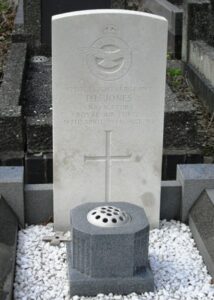
Leonard Lewis. This man cannot presently be identified.
David Mann, Engineman, LT/KX 125167, Royal Naval Patrol Service. David was born at Pwllheli in 1921, the son of Richard Mann and Catherine Mann (nee Roberts), of Pwllheli. He married Florence Parry, of Aberystwyth in 1942. David served with the Royal Naval Patrol Service, aboard HM Trawler Birdlip, an anti-submarine trawler. On 13 June 1944, Birdlip was on patrol off Greenville, Liberia, when she was torpedoed and sunk by the German submarine U-547. David was 23 years old when he died that day, and is commemorated on the Lowestoft Naval Memorial, Suffolk.
Gwilym David Rees, Private, 14415287, Welch Regiment. Gwilym served with the 4th Battalion, Welch Regiment, which was the Carmarthenshire TA battalion, and was attached to the 53rd (Welsh) Division. At the end of June 1944 the division landed in Normandy, taking part in the terrible fighting in the Bocage. It then took part in the epic drive through Northern France into Belgium and through Holland. Gwilym was killed during the fight to capture s’Hertogenbosch on 23 October 1944. He was 19 years old, and is buried in Uden War Cemetery, Netherlands.
Elwyn Thomas. This man cannot presently be identified.
David John Williams, OBE, Master, Merchant Navy. David was the son of David Williams, and of Annie Williams, of Aberystwyth. He was a long serving Mariner, and had been awarded the Lloyd’s Medal for lifesaving at sea, and also created an Officer of the British Empire. David served as Master of the SS Empire Tower, a London registered cargo steamer. On 5 March 1943, she was on route from Huelva and Gibraltar for Middlesbrough when she was torpedoed by the German submarine U-130, and sunk with the loss of 38 lives. David was 38 years old when he died that day, and is commemorated alongside his crew on the Tower Hill Memorial, London.
